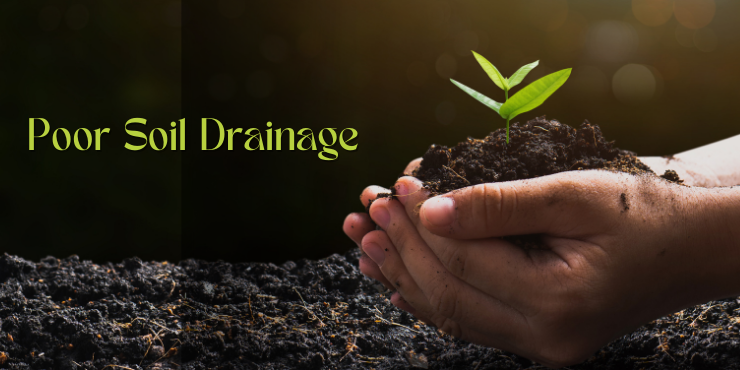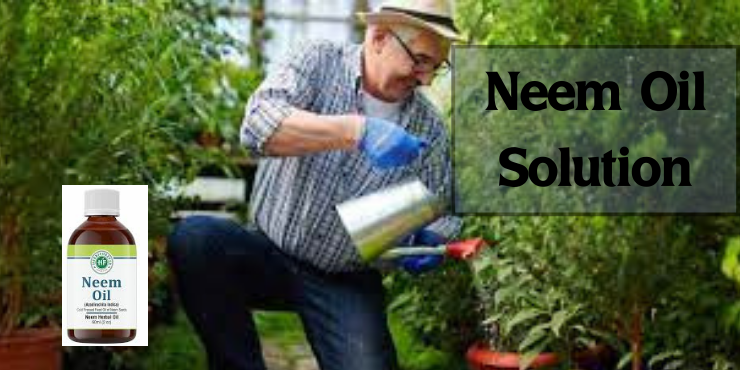Little white bugs in soil gardening can be an immensely rewarding experience, but it comes with its share of challenges. One of the most common issues that gardeners encounter is the presence of little white bugs in the soil. These tiny pests can wreak havoc on your plants if left unchecked. In this article, we’ll dive deep into the world of these critters, explore their types, and provide valuable insights on how to eliminate them while nurturing a thriving garden.
Table of Contents
- Introduction
- Identifying the Culprits
- Understanding Fungus Gnats
- Examining Springtails
- Meet the Mealybugs
- Signs of Infestation
- Wilting and Yellowing Leaves
- Stunted Growth
- Visible Insects
- Causes of Infestation
- Overwatering
- Poor Soil Drainage
- Lack of Aeration
- Prevention and Management
- Optimal Watering Practices
- Improving Soil Structure
- Natural Predators
- Effective Treatment Methods
- Neem Oil Solution
- Diatomaceous Earth Application
- Sticky Traps for Monitoring
- Maintaining a Healthy Garden
- Choosing the Right Plants
- Regular Inspections
- Balanced Fertilization
- Conclusion
- Frequently Asked Questions
1. Little white bugs in soil
As gardening enthusiasts, we invest time and effort into nurturing our plants. However, the appearance of small white bugs in the Little white bugs in soil can be disheartening. These pests are more than just a nuisance; they can damage your plants, hinder growth, and even lead to the demise of your cherished garden inhabitants. In this article, we will explore the types of white bugs that commonly infest soil, their signs, causes of infestation, and most importantly, effective ways to manage and prevent their presence.
2. Identifying the Culprits
Understanding Fungus Gnats
Understanding Fungus Gnats is an informational article that delves into the world of fungus gnats, a common pest in indoor gardens, potted plants, and greenhouses. The article provides readers with a comprehensive understanding of these tiny insects, including their biology, behavior, and impact on plants. Fungus gnats (Sciaridae) are one of the most prevalent pests that affect indoor and outdoor plants alike. These minuscule insects resemble tiny mosquitoes and thrive in damp, organic-rich environments. Despite their innocuous appearance, their larvae feed on plant roots, leading to weakened plants.
Examining Springtails
Examining Springtails is an informative article that dives into the world of springtails, tiny creatures found all around us but often overlooked. The article explores their unique characteristics, habitat, and behavior, shedding light on the fascinating world of these small arthropods. Springtails (Collembola) are another group of tiny white bugs commonly found in moist little white bugs in soil. These creatures play a vital role in breaking down organic matter, but their population explosion can lead to plant damage. They usually thrive in excessively wet conditions.
Meet the Mealybugs
Meet the Mealybugs” is a captivating and informative book that introduces young readers to the fascinating world of mealybugs. Through vivid illustrations and engaging text, this book tells the story of a family of mealybugs and their adventures in a garden. Mealybugs are soft, oval-shaped insects covered in a white, waxy substance. They feed on plant sap, causing yellowing leaves and stunted growth. Mealybug infestations are often identified by the cotton-like masses they create on plants.
3. Signs of Infestation
Wilting and Yellowing Leaves
Wilting and Yellowing Leaves” is a concise and practical guide for gardeners and plant enthusiasts who are faced with the common problem of wilting and yellowing leaves in their plants. One of the initial signs of a bug infestation is the appearance of wilting, yellowing, or discolored leaves. This occurs due to the pests’ disruption of the plant’s nutrient uptake.
Stunted Growth
Stunted Growth” is a term used to describe a condition when normal growth and development in children is significantly below average. It refers to a delay or obstruction in physical, mental, or emotional progress compared to their peers of the same age group. Infested plants tend to exhibit stunted growth. If your plants are not reaching their expected size or are lagging in development, it might be due to the presence of Little white bugs in soil.
Visible Insects
Visible insects, little white bugs in soil, are small, white in color, and can be seen crawling around in the soil of indoor and outdoor plants. These bugs are commonly known as springtails or snow fleas. They measure only a few millimeters in length and have soft bodies. However, despite their name, they do not have actual fleas or spring-like ability. Sometimes, the bugs themselves become visible on the soil surface or on the plant. If you notice tiny white creatures crawling around, it’s time to take action.
4. Causes of Infestation
Overwatering
Overwatering is a gardening practice in which plants are given more water than they need, leading to excessive moisture in the soil. It is a common mistake that can have detrimental effects on plant health. Overwatering creates the perfect environment for these pests to thrive. Excess moisture in the little white bugs in soil encourages the growth of fungus and provides a breeding ground for bugs like fungus gnats and springtails.
Poor Soil Drainage

Poor soil drainage refers to the inability of water to properly drain through the little white bugs in soil, leading to waterlogged or saturated soil conditions. This means that excess water is unable to move away from plant roots, which can have negative effects on plant health. Improper drainage leads to waterlogged soil, which becomes a haven for these bugs. Ensuring proper drainage can significantly reduce the risk of infestations.
Lack of Aeration
Lack of aeration refers to a condition in which the little white bugs in soil is compacted or dense, preventing the circulation of air through the soil. This can have negative effects on plant health and growth. Compacted soil lacking proper aeration makes it difficult for water to evaporate and leads to moisture accumulation, attracting white bugs.
5. Prevention and Management
Optimal Watering Practices
Optimal watering practices refer to the appropriate and efficient ways of providing water to plants, ensuring they receive the right amount of hydration without over or under watering them. Watering your plants correctly is essential. Allow the little white bugs in soil to dry out between watering sessions to discourage bug breeding.
Improving Soil Structure
Mulching is the practice of covering the soil surface with a layer of organic or inorganic material, such as straw, wood chips, leaves, or gravel. This layer of mulch provides several benefits to the soil and plants. Enhance little white bugs in soil structure by adding organic matter to improve drainage and aeration, making the environment less favorable for bug proliferation.
Natural Predators
Natural predators are living organisms that hunt, catch, and consume other organisms as their main source of food. These predators play a crucial role in maintaining the balance and stability of ecosystems by regulating population sizes of their prey. Introducing natural predators like nematodes or predatory mites can help keep bug populations in check.
6. Effective Treatment Methods
Neem Oil Solution

Neem Oil Solution is a natural and organic extract derived from the neem tree (Azadirachta indica). It is commonly used in gardening and for various home remedies due to its numerous beneficial properties. Neem oil is known for its potent insecticidal and fungicidal properties, making it an effective solution for controlling pests and diseases in plants. It works by disrupting the life cycle of pests, prohibiting their growth and reproduction.
Neem oil is a natural insecticide that disrupts the bugs’ life cycle. Dilute and apply it to the little white bugs in soil to target larvae and adult insects.
Diatomaceous Earth Application
Diatomaceous Earth Application refers to the process of using a natural product called diatomaceous earth to solve various issues in households, gardens, and agricultural settings. Diatomaceous earth is composed of the fossilized remains of microscopic algae known as diatoms. This powder-like substance is highly porous and contains silica, which makes it abrasive to insects and other small organisms.Diatomaceous earth is an abrasive substance that damages bugs’ outer shells, leading to dehydration and death.
Sticky Traps for Monitoring
Sticky traps for monitoring are simple yet effective tools used to monitor the presence and population of insects in various environments. These traps consist of a yellow or blue sticky surface that is attractive to a wide range of flying insects. The traps are typically made from a durable and weather-resistant material that can be placed in both indoor and outdoor settings. Sticky traps placed near plants can help capture adult insects and monitor their presence.
7. Maintaining a Healthy Garden
Choosing the Right Plants
Choosing the Right Plants” is a comprehensive guide designed to help individuals make informed decisions when selecting plants for their gardens, landscapes, or indoor spaces. The book provides valuable information on various factors that should be considered, such as climate, little white bugs in soil conditions, sunlight exposure, and maintenance requirements. With practical tips and expert advice, the guide offers insights into matching plants to specific environments, ensuring optimal growth and creating visually appealing and sustainable green spaces. Select plants that are less susceptible to bug infestations, giving your garden a natural defense.
Regular Inspections
Regular inspections refer to the routine assessment and evaluation of a building, facility, or system to ensure that it continues to meet the necessary safety, quality, and regulatory standards. These inspections are typically conducted by trained professionals, such as building inspectors, health and safety officers, or maintenance personnel. Frequent checks on your plants can help you detect infestations early and take prompt action.
Balanced Fertilization
Balanced fertilization refers to the practice of supplying plants with the optimal amounts of essential nutrients required for their growth and development. It involves careful analysis of little white bugs in soil fertility and nutrient requirements of the plants being cultivated, and then applying fertilizers in the appropriate ratios and quantities to achieve maximum productivity and health. Properly fertilized plants are more resilient to bug attacks. Maintain a balanced fertilization routine.
8. Conclusion
In conclusion, while little white bugs in soil can pose a challenge to gardeners, they are not invincible foes. By identifying the culprits, understanding the signs, and implementing preventive measures and treatment strategies, you can effectively manage these pests and create a thriving garden environment. Remember, a healthy garden requires vigilance, care, and a proactive approach to bug management.
9. Frequently Asked Questions
- Can these white bugs harm humans? These bugs are generally harmless to humans and pets; their focus is primarily on plants.
- Are chemical insecticides the only solution? No, there are several natural and organic methods, like neem oil and diatomaceous earth, that can effectively control these bugs.
- How often should I inspect my garden for infestations? Regular inspections, preferably weekly, can help you catch and address infestations before they worsen.
- Can I use sticky traps indoors? Yes, sticky traps can be used indoors, especially in areas prone to bug infestations.
- Is it possible to have a bug-free garden? While it’s challenging to have a completely bug-free garden, following preventive measures can greatly minimize bug-related issues.
